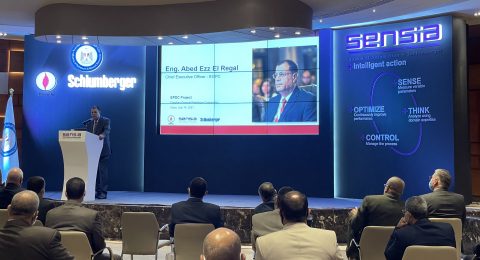The need to increase hydrocarbon production is particularly acute in China. China produces nearly 5 Bcf/d of natural gas, and demand is expected to reach nearly 11 Bcf/d by 2010. To meet the demand, pressure is being brought to bear on the two main domestic producers, CNPC and Sinopec, to increase in-country production. The government has set a target to nearly double gas usage within the country’s energy mix to 5.3% in 2010 from 3% today.
Sinopec is the country’s second largest energy company, and so plays a key role in addressing China’s energy supply challenges. Forty percent of Sinopec’s gas production comes from the Sichuan Province of Western China, which is characterised by low permeability, heavily-fractured reservoirs. One of the larger fields in the Sichuan basin is XinChang, this asset has been targeted for a multi-year exploitation and step-out drilling programme by Sinopec. Although seismic data existed for the field, it was not considered to be of the quality needed to image the deeper reservoir intervals and to target fracture ‘sweet spots’ that correlated with the highest producing wells. In 2003, geophysicists from Sinopec’s local operating company – Southwest Petroleum Branch (SWPB) – began considering alternatives for improving seismic data quality at XinChang. Over the next several years, SWPB undertook the largest full-wave imaging programme on record, yielding impressive results, both in terms of well success rates and productivity.
Exploration and Production
The XinChang gas field is one of the larger fields in the Sichuan Basin of Western China, and currently produces 39 MMCF/d from four wells. It is operated by the South West Petroleum Branch of Sinopec. Gas is produced from multiple pay zones within the Upper Triassic tight sandstones at depths of around 5,000 metres. Productivity of individual wells varies significantly, even within the same geological horizon, due to the fractured nature of the reservoir.
The operator had particular goals for improving their understanding of their field:
-
Obtain high resolution images for the deeper reservoir targets
-
Optimize images despite challenging near-surface conditions
-
Increase the S/N ratio and bandwidth
-
Eliminate background noise, especially from man-made sources
-
Characterise reservoir properties: lithology, sand thickness, porosity, gas saturation, and fracturing.
Seismic Data Acquisition
In October 2004, SWPB commissioned BGP to commence acquisition using 6,000 VectorSeis full-wave (3C) stations (18,000 channels) connected to an I/O System Four acquisition platform. The topography of the field presented several survey design challenges. Most of the area is relatively flat with a surface layer that has been tilled for hundreds of years, which introduces challenges with near-surface attenuation of both frequencies and signal. The acquisition objectives ranged in depth from 2,000 to 6,000 m, with the chief zone of interest at around 5,000 m. Illumination of the complex subsurface and the deeper Triassic reservoirs required broadband, wide-azimuth, densely-sampled data. The seismic operation was complicated by significant surface obstructions which cut across the landscape, including rivers, pipelines, railway lines and roads, as well as urban areas. As a consequence, the seismic acquisition system needed to be flexible to ensure the health, safety, and environmental (HSE) requirements of both seismic field workers and nearby residents.
The survey size, amount of data acquired, and scale of the operation make XinChang the largest full-wave program yet undertaken, using a crew of over 1,500 people and more than a hundred vehicles.

Figure 1: Shear Impedance overlaid on Similarity shows correlation of productive wells with fracture density
Data Processing
Converted shear-wave energy had been seen on shot records from prior surveys. By specifying 3-component acquisition employing MEMS sensors, SWPB’s aim was to obtain high quality broadband data with enhanced low frequencies to improve resolution, and also to record both P-wave and S-wave data that could be combined to yield information regarding fracture intensity, variations in lithology and fluid content. The data processing aims were to obtain a high-resolution structural image that had compatible detail and frequency content when stretched to P-wave time; then extract geophysical information such as shear impedance and Vp/Vs ratio to help to characterizing reservoir lithology. Finally, it was hoped to map fracture patterns within and around the reservoir by employing shear-wave splitting analysis. In this method, the recorded horizontal data is first rotated into radial and transverse components. Azimuthal properties were preserved though the migration process. The reservoir is affected by significant azimuthally varying anisotropy, which complicates the isolation of radial and transverse energy. This was dealt with using a layer-stripping technique called ‘2C Forward & Reverse Rotation’. The processed seismic data was then integrated with well logs, outcrop data and core analyses to better define the region’s geologic and tectonic history; build structural and stratigraphic models for the area; map fracture patterns and intensity; and determine the best locations for future drilling.
Integrated Reservoir Interpretation
The XinChang reservoir is highly compacted, with porosities less than 4%, and it is almost completely impermeable. Consequently production is totally fracture-dependent. The best exploitation targets are thin-bedded, brittle clastic rock types interconnected by faults. The high quality, high frequency P-wave data provided an improved structural picture with excellent fault resolution, but was unable to unequivocally determine lithology. Fortunately, the converted wave data was exceptional at discriminating lithology, e.g. Vp/Vs ratios. Similarity processing, curvature attributes, and shear-splitting analysis provided independent fracture intensity measures which were integrated into discrete fracture network (DFN) models and fracture maps. The P-wave and C-wave data were separately inverted to give true values of P-impedance and shear impedance.

Figure 2: 3D horizon-slice showing similarity, fracture density and fracture orientation together with well positions.
Early Results from Drilling
As processing and reservoir analysis progressed, SWPB geoscientists had more insights into the primary drivers of well productivity, including sand thickness, reservoir gas saturation, and fracture intensity near the well bore. These insights have improved well placement. Since the delivery of the final results in September 2007, three wells have been drilled and all completed as producers. One of these, at 18 MMcf/d of gas, is now the most productive well in the entire Sichuan Province. An additional 16 well locations have been identified from this integrated, full-wave imaging and reservoir analysis project.
Acknowledgements
The authors wish to thank the management of Sinopec and Southwest Petroleum Branch for granting permission to publish this paper.
By: John Tinnin, Pete Stewart, James Hallin, Chris Friedemann & Brian Donnelly – ION Geophysical Corporation







